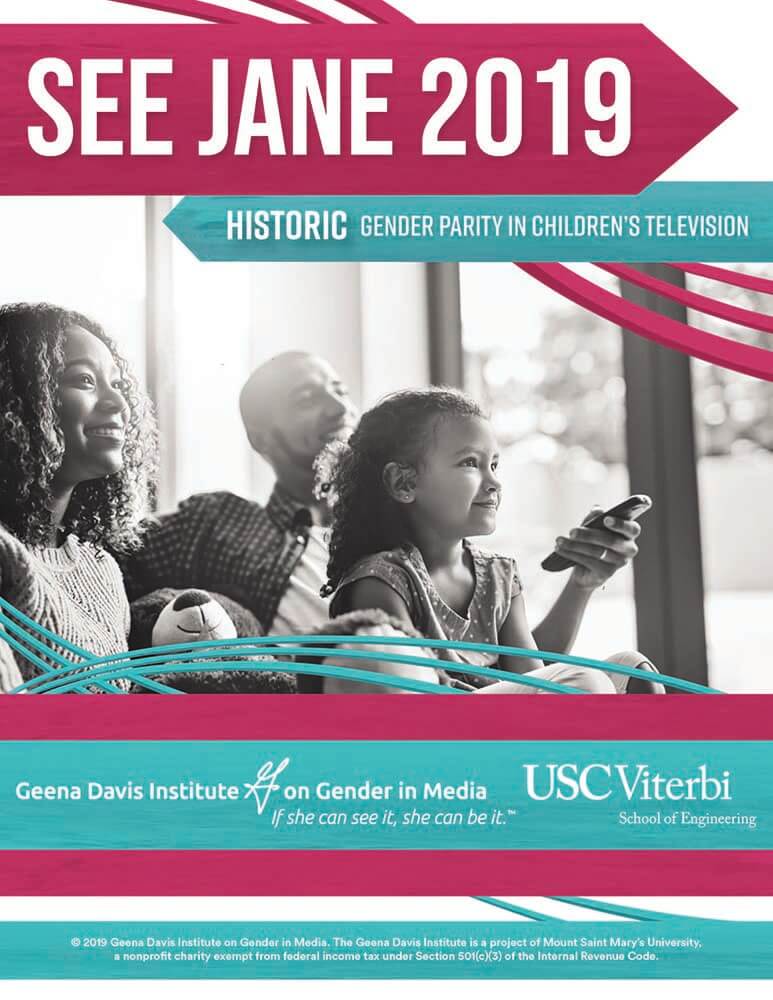This pivotal report explores representation in children’s television and films, uncovering disparities in gender, race, and LGBTQ+ portrayals. Despite some progress towards gender parity in children’s TV, significant gaps remain, particularly in children’s films and popular media where female and minority characters are underrepresented and often stereotyped. The report underscores the crucial need for more inclusive media portrayals to reflect and serve a diverse global audience effectively.
Key Findings
Gender
- We have seen a dramatic rise in the number of female leads/co-leads in children’s television shows – from 42.0% (2008) to 52.0% (2018). This is an historic finding of gender parity in the most prominent characters in children’s television.
- Unlike children’s television, a gender gap in leading/co-leading characters persists in children’s films. In 2018, male characters make up 67.2% of leads, compared to 32.8% female leads in children’s films.
- Popular films (the top 100 grossing films rated G – R) are better than children’s films when it comes to gender and leading/co-leading characters, but gender parity is elusive. Male characters make up 60.9% of leads, far outpacing female leads (39.1%).
- In 2018 children’s television, female characters account for 55.3% of screen time and 50.3% of speaking time.
- Female characters account for 36.6% of speaking time and 39.8% of screen time in children’s films.
- Female characters account for 36.2% of speaking time and 39.0% of screen time in popular films.
Race/Ethnicity
- People of color make up 38.0% of the U.S. population, but only 26.1% of leading characters in children’s television.
- People of color make up 28.8% of protagonists (leads and co-leads). Since 2011, leads/co-leads of color have steadily increased in children’s films.
- People of color make up 27.9% of the leading/co-leading characters in popular films.
LGBTQIA+
- LGBTQIA+ characters are virtually nonexistent, making up 0.2% of leading characters in children’s television
- 95.0% of prominent characters in children’s films are heterosexual, and this number has not improved in the past decade.
- 95.6% of prominent characters in popular films are heterosexual.
Disability
- Less than 1.0% of leading characters in children’s television have a physical, mental, or communication disability.
- 8.1% of the most prominent characters in children’s films are shown with a cognitive or physical disability, the highest percentage of the last decade.
- 6.1% of leading characters are shown with a cognitive or physical disability in popular films.
Recommendations
- Spellcheck for Bias and GD-IQ can help at every stage of the production process to uncover unconscious gender and race bias. It is especially important to analyze scripts prior to green lighting to make sure that the cast is gender, race, LGBTQIA+, and ability balanced in terms of the number of characters, the prominence of the characters, character screen time, and character speaking time.
- Diversify hiring in writing and directing. Diversity in the writing rooms and director’s chair translates into more diversity on the screen, so the problem with representation starts with inequitable hiring practices. Studies show that very few women and people of color are in key decision-making roles, and that there has been no improvement in the last two decades. Studios must truly commit to anti-discrimination in their hiring practices, and set hiring goals to diversify their workforce instead of continuing to pay lip service to being inclusive.
- Commit distribution and marketing resources equally. Another foundational problem with representation on the screen is that films directed by women do not receive the same distribution and marketing resources as films directed by men. Despite this, films written, directed, or starring women enjoy a greater average return on investment. Studios must commit to making more children’s films about the lives of women, people of color, LGBTQIA+ individuals, and people with disabilities, and ensure that these films reach the widest audience possible by equitably promoting them.
- Consider stories that reflect the broader population, and film audiences. Gen Z (roughly ages 6 to 21) is the most racially and ethnically diverse group in U.S. history, with nearly half (48.0%) being people of color. Gen Z is also gender fluid, with 52.0% identifying as something other than straight or heterosexual. Content creators must tell authentic stories that are relevant to a changing audience. It is especially important to have diversity with leading characters since plotlines and narratives revolve around their stories.
- Diversify background characters. Background characters greatly outnumber prominent, supporting, and minor characters. These characters do not contribute to the central storyline and generally do not speak, but they are important in that they establish who exists in these imaginary worlds. Content creators should aim to cast background characters who are visually diverse in age, gender, race/ethnicity, ability, and sexual orientation.
